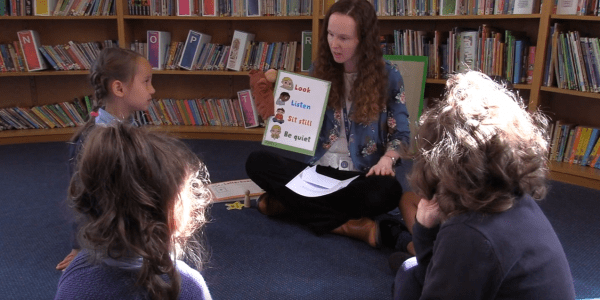Childcare workers suffer real terms pay losses of 5% since 2013 – in stark contrast to a 2.5% rise amongst the female working population, according to new Nuffield-funded research from the Education Policy Institute (EPI).
The new detailed analysis of the childcare workforce in England also found that:
- Pay is low, on average, £8.20 an hour – and around half (44.5%) of childcare workers claim state benefits.
- Despite being slightly more qualified than hairdressers and beauticians, real pay cuts experienced by childcare workers mean that pay per hour is now at very similar levels to workers in these two professions.
- Childcare workers also remain far less qualified than teaching workers but have little opportunity to gain higher qualifications.
The report compares conditions and characteristics of childcare workers with those in ‘competing’ jobs such as hairdressers and beauticians – occupations that are often regarded as career alternatives. Comparisons are also made with teachers, and the female working population.
The government recognises that childcare can play a critical role in a child’s outcomes in life. Research shows that supporting and developing a high quality workforce is central to this.
Key findings
A large proportion of childcare workers are struggling financially
- Pay is low, both in relative and absolute terms. The childcare workforce earned an average hourly pay of £8.20 in 2018 – 40 per cent less than the average female worker.
- Childcare workers are in a position of high financial insecurity, with a high proportion of workers claiming state benefits or tax credits (44.5%). This is more than competing occupations, such as hairdressers and beauticians, as well as the female working population as a whole (34%).
- The sector has suffered a pay reduction of nearly 5% in real terms since 2013, despite working women overall seeing rises of 2.5%.
- Real-terms pay decreases mean that childcare workers’ pay in 2018 is now virtually the same as that of hairdressers and beauticians. This is despite increased government investment in early education, and recognition of the key role of childcare workers in improving the quality of provision. This also does nothing to dispel the culture, in some schools and colleges, that childcare should only be seen as a route for those with low prior-attainment.
Sector recruitment problems: immediate and long-term
- Childcare providers frequently report difficulties in hiring staff, particularly well qualified staff that have full ‘Early Years Educator’ status (level 3 qualification). The numbers of staff with this qualification have been erratic, standing at 65.9% in 2013, 73% in 2016, and 68.3% in 2018, for nursery nurses and assistants.
- The sector is ageing, and faces an increasingly uncertain future. In 2018, around 90,000 childcare workers were 55 years old or above. A significant number are likely to exit the workforce in the next decade and there is little indication that sufficient numbers of younger workers will replace retiring older workers.
- In 2018, more than 37,000 EU nationals were working in childcare in England, totalling 5.1% of all workers. This is a similar contribution to EU nationals in the NHS (63,000 workers and 5.6% of staff).
The workforce has low qualifications, which could affect the quality of childcare provision
- The childcare workforce is also far less qualified than the teaching workforce and the general female working population, and slightly better qualified than hairdressers and beauticians. In 2018, 25.1% of the childcare workers had completed a degree, 36% A-levels or equivalent, and 24.4% GCSEs or below. By contrast, around 93% of teachers have a degree or equivalent. Overall, qualification levels have marginally increased, but at a very slow pace in the last few years.
- Supporting childcare workers to upskill and gain higher qualifications is critical to the quality of early years education, yet many workers are not undertaking further training, in part due to fewer opportunities provided by employers. For those that do upskill, there is no guarantee of career progress.
- This trend is particularly worrying for childcare workers, given their relatively low level of education at the time they enter the profession and the importance of professional development to improve workforce quality.
The workforce remains predominantly female
- The number of male workers in the childcare sector has increased – yet remains very low at 7.4%. This is only around half the proportion of male workers in other female-dominated professions, such as hairdressers and beauticians (13.7%) and with nursery and primary teachers (15.8%).
- Within this figure, just 1.8% of nursery nurses and assistants, and 4% of childminders, are male.
Dr Sara Bonetti, Associate Director of Early Years at the Education Policy Institute, said:
“There is overwhelming evidence that high quality childcare plays a vital role in the outcomes of a child’s life, with a skilled, qualified workforce absolutely central to delivering this.
“This report should therefore concern parents who use childcare services, and the government, which regards high quality early years education as crucial to social mobility. We find that the childcare workforce is poorly qualified, and faces a number of recruitment problems – with many workers experiencing serious financial hardship. Childcare workers are now paid similarly to hairdressers and beauticians, with pay falling since 2013.
“While the government has rightly recognised the importance of education in the early years, it must offer far more support to the three-quarters of a million workers in England who play an indispensable role in the care and development of our young children.”
Josh Hillman, Director of Education at the Nuffield Foundation, said:
“Previous Nuffield-funded research has demonstrated that well qualified early years staff is an important factor in improving children’s outcomes. We are therefore keen to understand more about the early years workforce and its contribution to the quality of provision.
“This new research from the Education Policy Institute shows that the incentives to stay in the childcare sector are low, with a decline in real-term wages of 5 per cent since 2013. Despite government investment in early years education, childcare workers continue to face financial insecurity.
“The research also shows early years staff are offered few opportunities to improve their qualifications, which is particularly worrying given both the importance of the quality of provision and concerns over recruitment in the childcare sector.”



















































